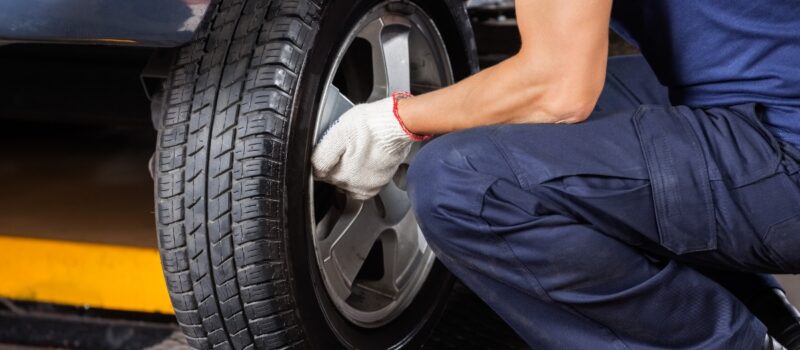Purchasing a car is a memorable experience for many of us, and you want your travels to be as comfortable as possible. A car’s fitness and performance are greatly inspired by its engine, however, the situation of the tires is also quite critical. Keeping your car in peak condition involves various types of maintenance, and wheel care is often overlooked. Wheel alignment and balancing are among the crucial treatments for a smooth drive. Both play important roles in ensuring top-of-the-line coping with and sturdiness of your tires. If you are in the UK and searching for reliable services, JIOMTY’S AUTO CENTRES provides professional wheel balancing and alignment for a smooth and safe ride. They ensure your vehicle performs at its best, with advanced equipment and skilled technicians. In this comprehensive guide, we will discuss wheel balancing vs. alignment what’s the difference, and why you need both.
What is Wheel Balancing?
Wheel balancing relieves problems with the concentration of mass around the wheel and tire circumference. When wheels are made to balance, it means that they rotate on their axis in a manner that does not create unauthorized vibrations that tend to improve the ride or drive quality. A tire is balanced when one places a small weight to particular positions on a wheel so that the wheel is properly weighted. It also enables you to prevent additional uneven weight distribution on your car’s suspension and steers, which implies a more comfortable and safe drive.
What is Wheel Alignment?
Where wheel balancing is concerned with the distribution of weight around a central axis, wheel alignment centers on the angles at which the wheels should appear to allow them to be parallel with each other but perpendicular to the earth’s surface. These consist of such problems as the wear of tires, poor handling of vehicles, and even high fuel consumption rates when the vehicle parts are not properly aligned. Although the most common adjustments are on the camber, toe, and caster, a good technician will set your vehicle to achieve straight-ahead stability. Wheel alignment therefore helps to prevent ear, wear and tear on tyres as well as enhance the steering ability and efficiency in the use of fuel.
Why is Wheel Balancing Important?
This may cause several problems which include. Over time, even a minor imbalance can cause noticeable vibrations, particularly at higher speeds. These vibrations can shorten the life of shocks, bearings, and many suspension parts and lead to expensive repairs. In the same way that unbalanced wheels can cause uneven wearing of tires, the lifespan of your tires will be compromised. It has been found doing periodic wheel balancing helps in reducing excessive wear and tear of tires as well as enhances the performance of the vehicle. Anyone interested in this will not find it difficult to get wheel balancing in Southampton helping them improve on that.
Why Wheel Alignment is Necessary?
However, when the wheels of a vehicle are out of alignment, it changes the handling mechanism of the car, in the most unfortunate times compromising safety. Misalignment also results in poor, very fast wearing of the tires and you will be forced to swap your tires often. Misalignments can cause your tires to wear unevenly which can make your vehicle wander to one side and require frequent steering correction which is both tiring to do and dangerous to perform over long distances. Wheel alignment on your car is important since itinals to even tire wear, better fuel economy, and top-notch comfort and safety when driving.
The Main Distinctions Between Wheel Alignment and Balancing:
Whereas wheel balancing and alignment are services meant to enhance the handling of the vehicle and tires, they help to solve two distinct problems. Balancing tires means changing the weight of the tire while alignment centers on the angles of the wheels. It is still possible that the tires of a car are balanced, but the car still requires an alignment. In general, wheel balancing is more connected with the stability of the tires while alignment is much more important for vehicle handling. In England, the three strategies that have been mostly used to check the alignment of wheels include tracking wheel alignment, which refers to tracking.
When Should One Get Wheel Balancing and Alignment?
Ideally, wheels should be balanced every 5,000 to 6,000 miles or as soon as the car’s driver or passengers experience some unusual vibrations or uneven tire wear. It is recommended to check it yearly if you experience hitting any pothole, or curb or having any weird steering wheel vibrations. Regular checkups of both balancing and alignment are important since this way you stop underlying issues from developing into more dangerous situations such as tire failures and thus, the need for replacements.
Why You Need Both for a Smooth Ride:
Wheel balancing and alignment should be done from time to time and the two activities complement each other to give the vehicle users a safer ride. A correct wheel balance helps eliminate oscillations that may cause some bothersome vibrations, whereas the wheel alignment increases controllability and ensures that your tires are wearing evenly. Slackness involving either of the two services can result in inconvenience, constant replacement of tires as well as safety compromises. Altogether, balancing and alignment provide the most stability as well as comfort for a car ride.
In the closing:
In this case, we find that wheel balancing and alignment are important parts of car maintenance. Wheel balancing deals with the balance of weights around your tires and on the other hand alignment deal with the angles of your wheels. Both services are crucial for tire wearing, car stability, and comfort on the road. If you are in Southampton or you are interested in wheel balancing, including tracking wheel services with your maintenance would be very effective since it improves the performance and safety of your vehicle.









